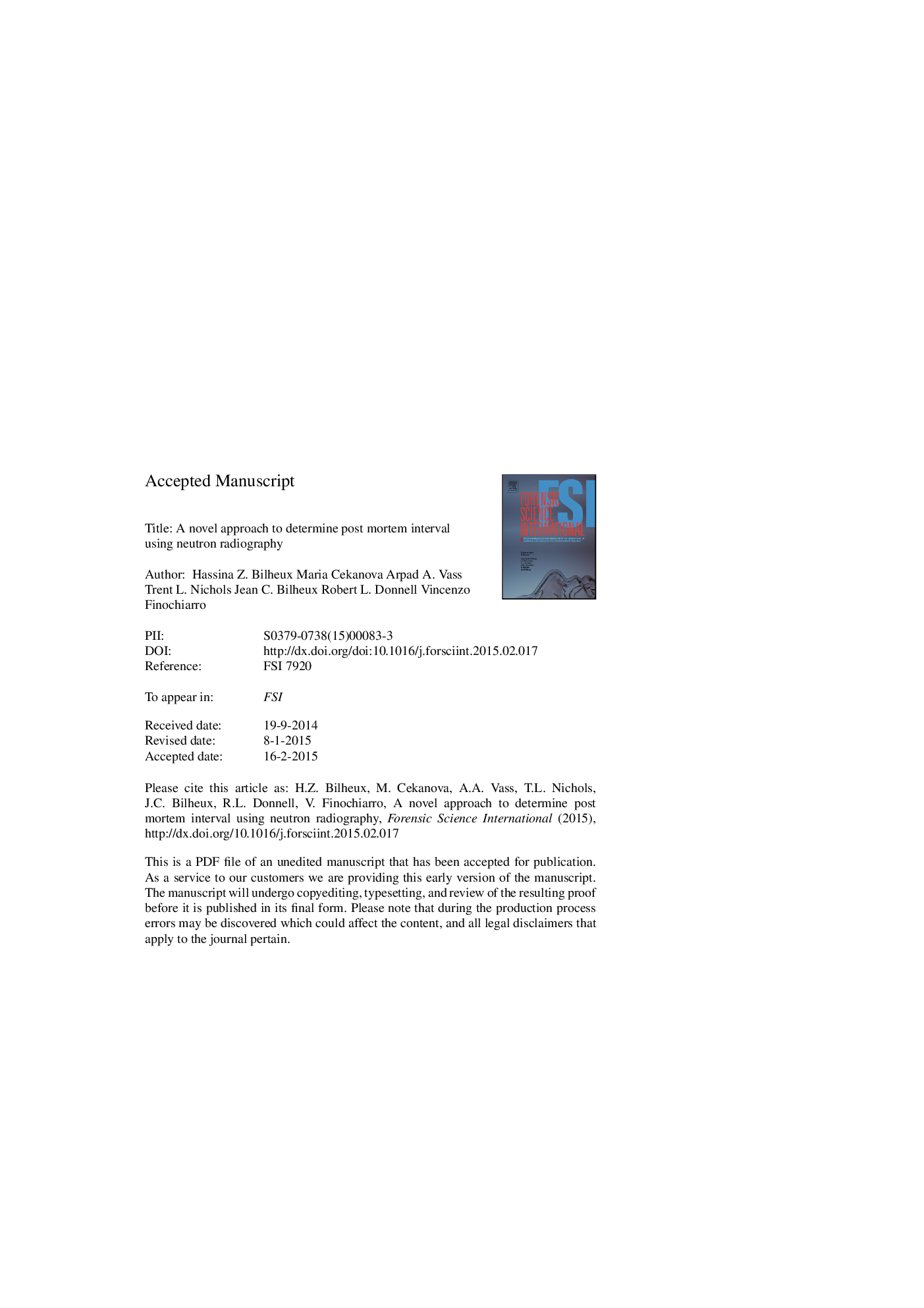| Article ID | Journal | Published Year | Pages | File Type |
|---|---|---|---|---|
| 6552117 | Forensic Science International | 2015 | 19 Pages |
Abstract
Neutron radiography of decaying canine tissues was performed to evaluate the PMI by measuring the changes in H content. In this study, dog cadavers were used as a model for human cadavers. Canine tissues and cadavers were exposed to controlled (laboratory settings, at the University of Tennessee, College of Veterinary Medicine) and uncontrolled (University of Tennessee Anthropology Research Facility) environmental conditions, respectively. Neutron radiographs were supplemented with photographs and histology data to assess the decompositional stages of cadavers. Results demonstrated that the increase in neutron transmission likely corresponded to a decrease in hydrogen content in the tissue, which was correlated with the decay time of the tissue. Tissues depleted in hydrogen were brighter in the neutron transmission radiographs of skeletal muscles, lung, and bone, under controlled conditions. Over a period of 10 days, changes in neutron transmission through lung and muscle were found to be higher than bone by 8.3%, 7.0%, and 2.0%, respectively. Results measured during uncontrolled conditions were more difficult to assess and further studies are necessary. In conclusion, neutron radiography may be used to detect changes in hydrogen abundance that can be correlated with the post-mortem interval.
Related Topics
Physical Sciences and Engineering
Chemistry
Analytical Chemistry
Authors
Hassina Z. Bilheux, Maria Cekanova, Arpad A. Vass, Trent L. Nichols, Jean C. Bilheux, Robert L. Donnell, Vincenzo Finochiarro,
